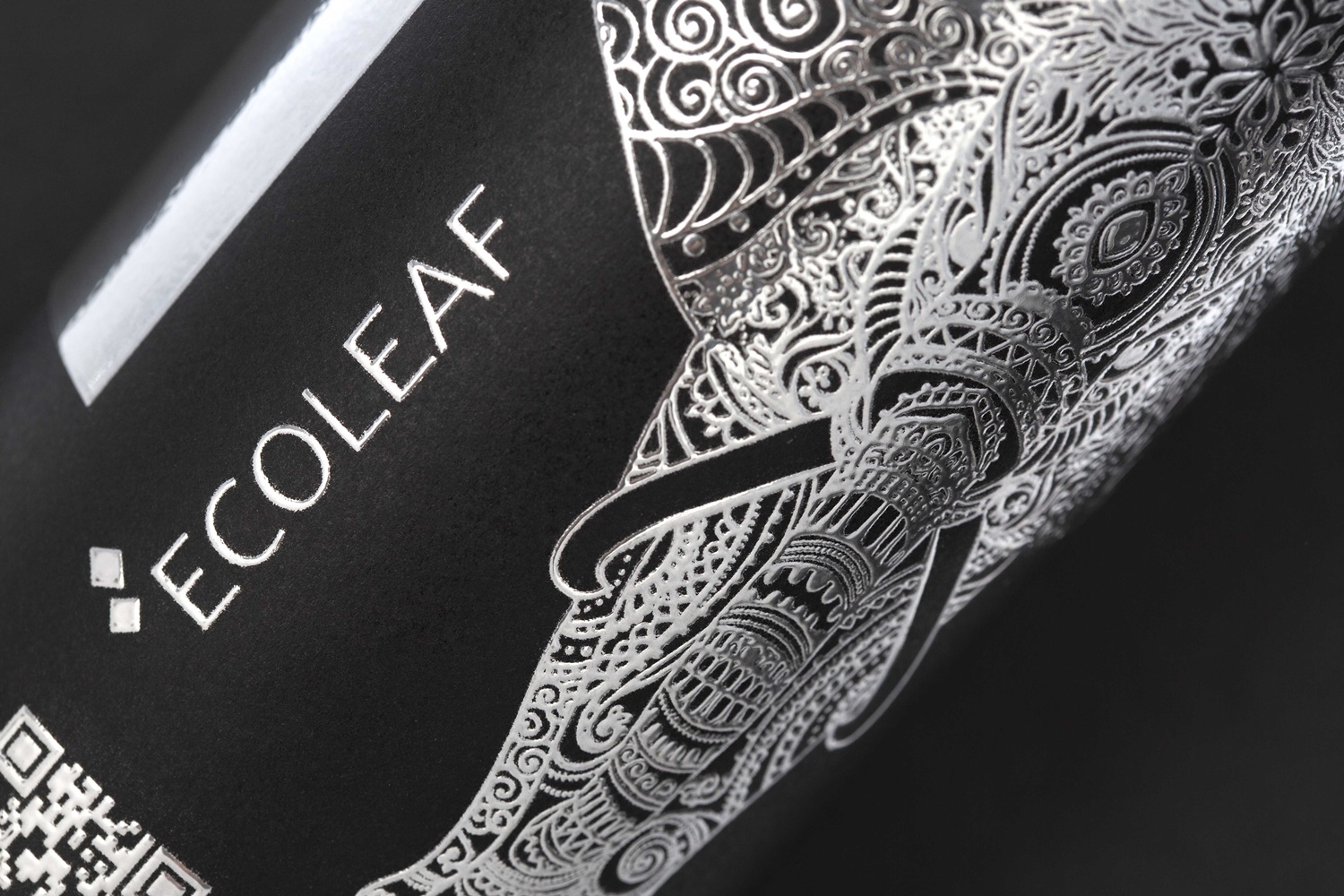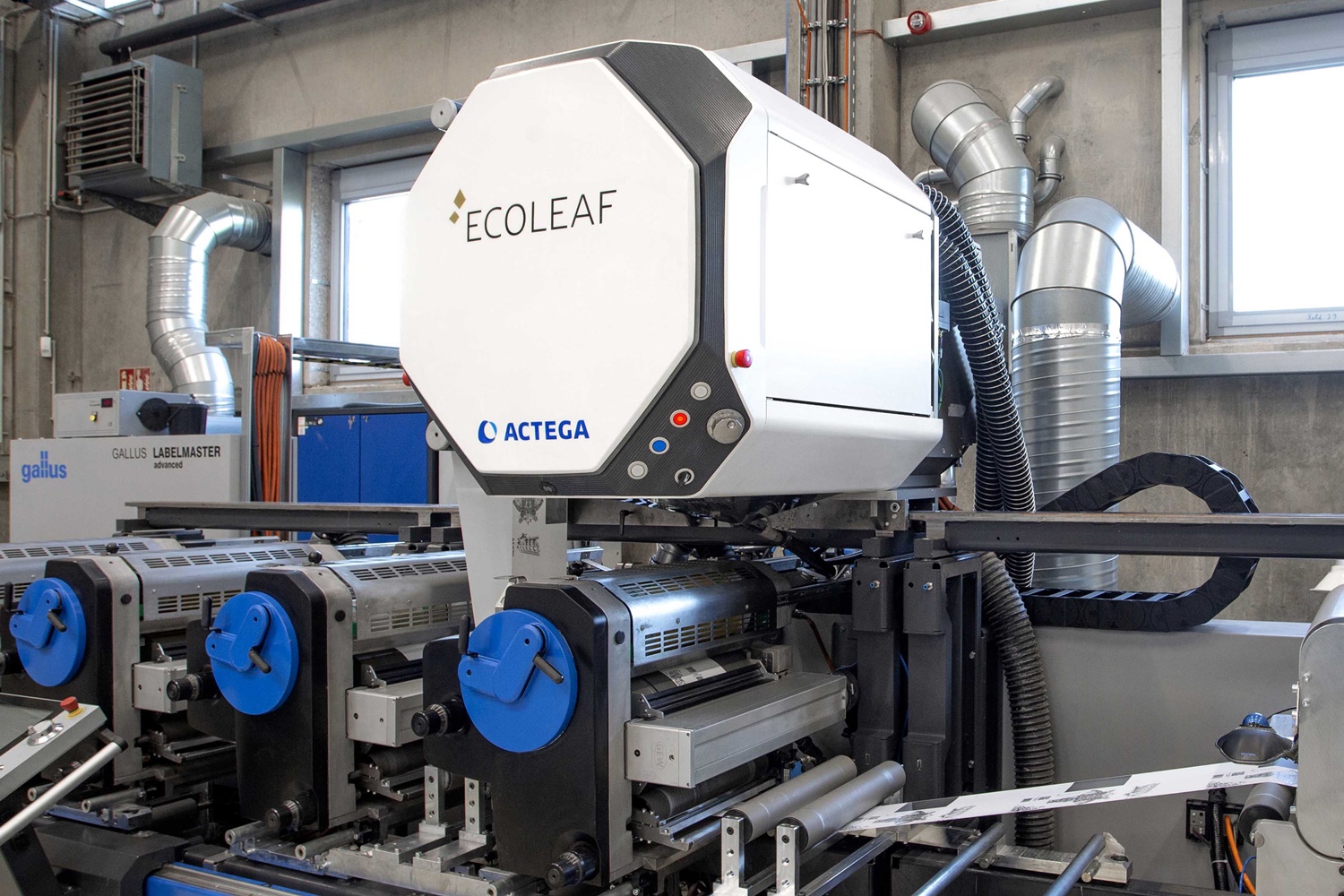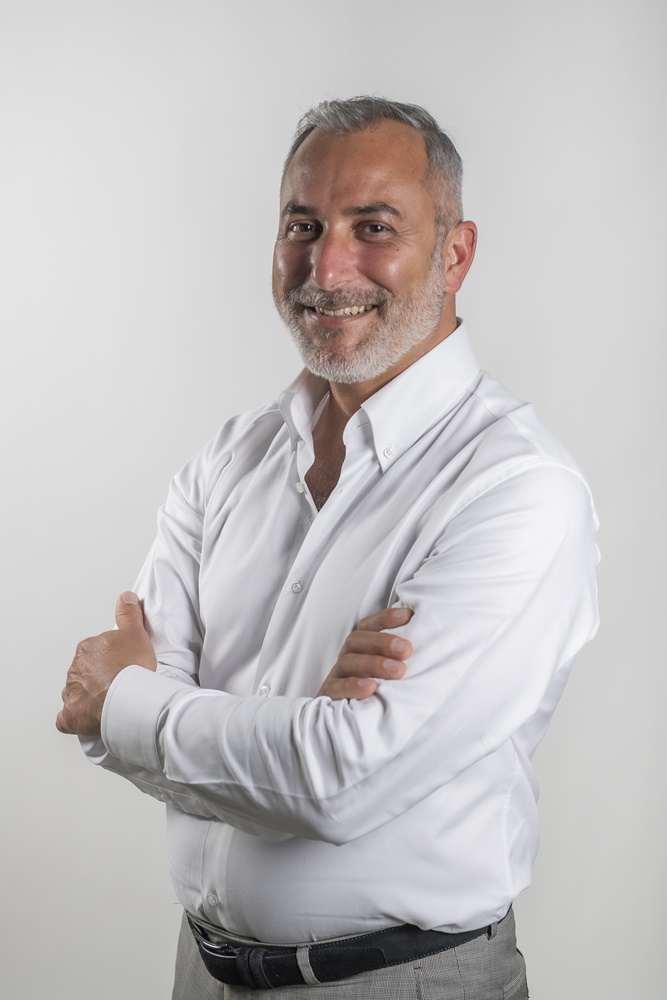P3 1-2/2022 en
Actega
From Hot and Cold Foil to EcoLeaf
Industry Interview
With thousands of tons of foil waste being landfilled or incinerated each year, transforming the metallic decoration process is a significant contribution to reducing carbon emissions. Initial calculations by Actega indicate that using their EcoLeaf solution can result in a carbon footprint reduction of more than 50% compared to cold and hot foils. We talked to Paolo Grasso, Sales Director, and Robert Koeckeis, Head of Product Management, Actega Metal Print.
EcoLeaf realizes significant improvements in sustainability by avoiding foil.
Firstly, can you tell us about Actega Metal Print and EcoLeaf?
Paolo Grasso: Yes of course. Actega Metal Print was founded in February 2017. Our mission is to revolutionize the graphic arts industry with a sustainable metallization technology that significantly reduces the amount of material, waste, cost and production time for creating decorative embellishments compared to today’s conventional processes that are mainly foil-based. To achieve this, Altana’s Actega division acquired Nano-Metallography™, a unique technology that was first unveiled at Drupa 2016 by Benny Landa, founder of the Landa Group. This game-changing technology is now called “EcoLeaf™”.
We then went on a journey to refine the technology and to build the business infrastructure, establishing a global partnership with print finishing expert, A B Graphic International (ABG), to manage direct sales, marketing and customer service. We now have six beta units in the market, with customers reporting incredible feedback.
What are the environmental benefits of EcoLeaf?
Paolo Grasso: Very simply, EcoLeaf realizes significant improvement in sustainability by avoiding foil. It places metal only where it’s needed, and therefore significantly reduces waste with a dramatic reduction of plastic (production/usage/disposal) and CO2 footprint vs. foil technologies.
It’s been the defector technology for 100 years or more, but how un-environmentally friendly is the hot and cold foil process?
Robert Koeckeis: It’s actually quite considerable and not much talked about either. Each year, thousands of tons of foil waste are sent to landfill or burned at incineration plants. Mainstream waste contractors aren’t able to offer viable recovery options for bulky foil waste, as the logistics required make it cost prohibitive for most. The first field test for a possible recycling path has been created, but as far as we know, it’s a long way from EU wide implementation.
But, brand owners and supermarkets continue to put pressure on the supply chain to improve their environmental standards, as well as legal obligations like the “Plastic Tax” being imposed by the EU and UK, with the aim to move the market to higher recycling rates.
Can the environmental benefits of EcoLeaf be quantified?
Paolo Grasso: Yes, they can. Initial calculations from our Life Cycle Assessment show a hugely positive impact on sustainability and resource reduction. We currently realize a CO2 footprint reduction greater than 50% compared to hot and cold foil.
That’s impressive, who did you use for the Life Cycle Assessment study and what did they establish?
Robert Koeckeis: We used Sphera Solutions to conduct the Cradle to Gate Life Cycle Assessment of EcoLeaf. The CO2 indicator that reports on resulting climate change for the assessment, demonstrated that EcoLeaf represents a > 50% reduction compared to the hot and cold foil process. It also showed that it does this without the other essential indicators showing an additional environmental burden.
Can you tell us what the functional unit for the respective variant was?
Robert Koeckeis: a) 1 m2 of label substrate, flat printed area of 10% metallization on its surface, produced in an industry scaled production job of 100,000 labels. b) 1 m2 of label substrate, textured or relief printed area of 10% metallization on its surface, produced in an industry scaled production job of 100,000 labels, haptics of 20 microns.
So, what environmental, regulatory and health-related considerations are you addressing?
Robert Koeckeis: To start with, EcoLeaf can be used for Indirect Foot Contact label products. What’s more, EcoLeaf and its components fulfil the REACH and EuPIA regulations and are permitted for use within packaging production. To achieve that, we have taken the necessary measures to ensure that all used raw materials correspond to the (EC) 1907/2006 REACH regulation. This means that they do not contain any substances from the updated SVHC-list (Substances of Very High Concern) list, in an amount > 0,1%.
Regarding recyclability: We have recently worked with recycling experts, Interseroh, achieving full certification for EcoLeaf with regards to PP/PE/PET labels. When analysing whether EcoLeaf is magnetizable or conductive, it was determined that EcoLeaf metallization had zero impact. When analysing the level of detectability of EcoLeaf metallization on the target surface material after a NIR sorting process, they ascertained that no influence of EcoLeaf metallization was found.
With regards to sustainability benefits, what feedback have you received from early beta users?
Paolo Grasso: We are delighted. All our beta customers report significant sustainability benefits thanks to EcoLeaf. In fact, Kolbe-Coloco, the German print specialist who was the first beta customer for EcoLeaf, recently announced that they had completed the beta program - specifically stating that EcoLeaf was enabling them to meet their customers’ sustainability targets for reduced waste.
In addition, Germark, one of Spain’s leading high-quality label printers, also said that EcoLeaf is allowing it to produce sustainable high-quality labels, something that all brands are looking for to support their environmental objectives - this is opening the door to new profitable business for them. Additionally, they mentioned that customers really like the way EcoLeaf makes their labels looks. They said that because of the EcoLeaf enabled screen haptic effect, their logos shine like diamonds, which is unique. Because of these benefits, they believe that EcoLeaf will significantly reduce or potentially remove hot and cold foil from their production process in the future.
Thank you for the interview!









